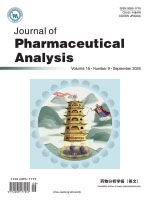2017 Vol. 7, No. 2
Display Method:
2017, 7(2): 77-86.
Abstract:
2017, 7(2): 87-94.
Abstract:
2017, 7(2): 95-102.
Abstract:
2017, 7(2): 103-109.
Abstract:
2017, 7(2): 110-117.
Abstract:
2017, 7(2): 118-122.
Abstract:
2017, 7(2): 123-128.
Abstract:
2017, 7(2): 129-133.
Abstract:
2017, 7(2): 134-140.
Abstract:



